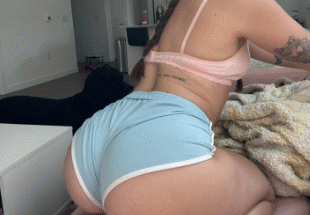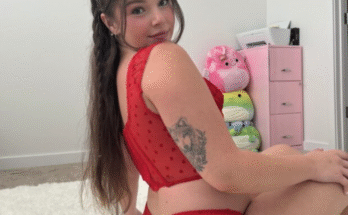In our fast-paced modern lives, it’s easy to forget how vital it is to care for our bodies—especially the lower half that supports us throughout the day. Whether you’re standing at work, sitting at a desk, or constantly on the move, your legs, hips, and lower back endure a lot of stress. Incorporating a gentle lower body yoga routine into your daily or weekly schedule can offer incredible relief, improve flexibility, and promote overall well-being.
This article offers a calm, beginner-friendly lower body yoga sequence that you can easily do from the comfort of your home. No fancy equipment is needed—just a yoga mat (or a towel), comfortable clothes, and about 20–30 minutes of your time.
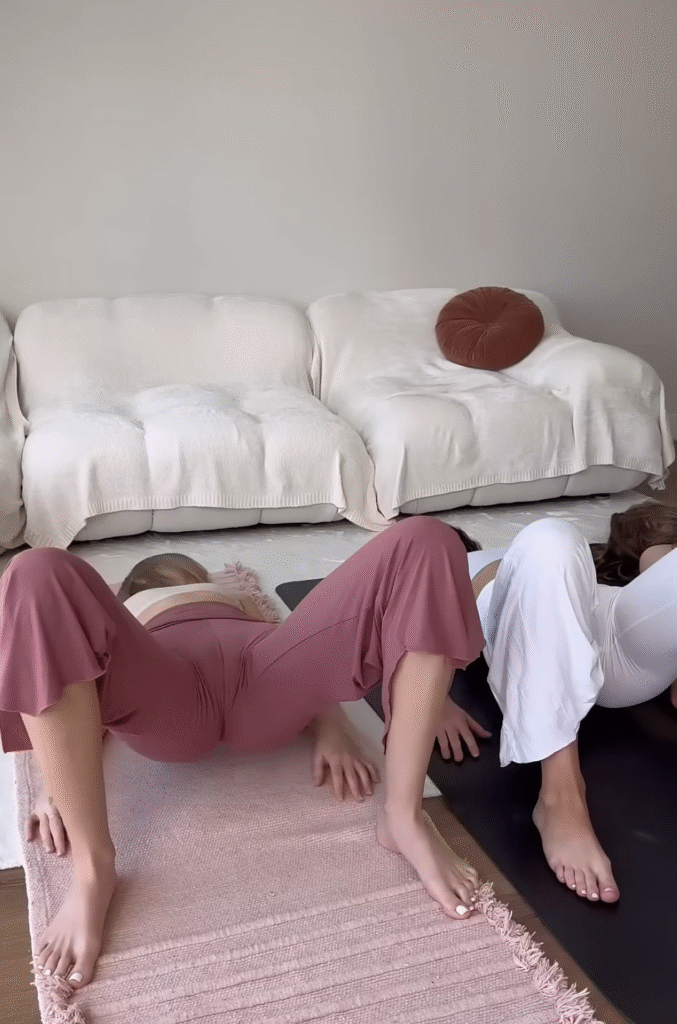
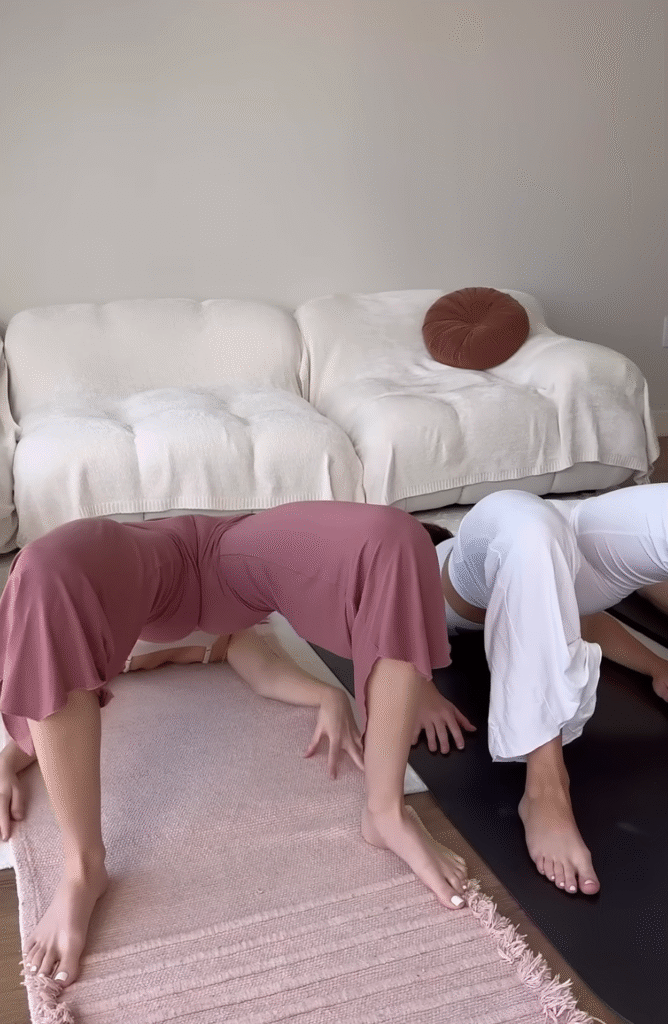
Benefits of a Gentle Lower Body Yoga Practice
Before diving into the routine, let’s explore why focusing on the lower body through yoga is so beneficial:
- Improves Flexibility: Regular stretching increases range of motion in the hips, hamstrings, calves, and lower back.
- Enhances Circulation: Yoga encourages blood flow to muscles, reducing stiffness and promoting healing.
- Reduces Tension and Stress: The slow, mindful movements calm the nervous system and relieve stored tension in the hips and thighs.
- Supports Joint Health: Gentle yoga movements lubricate joints and improve alignment.
- Boosts Balance and Strength: Lower body yoga engages stabilizing muscles, enhancing posture and body control.
Now, let’s move into the routine.

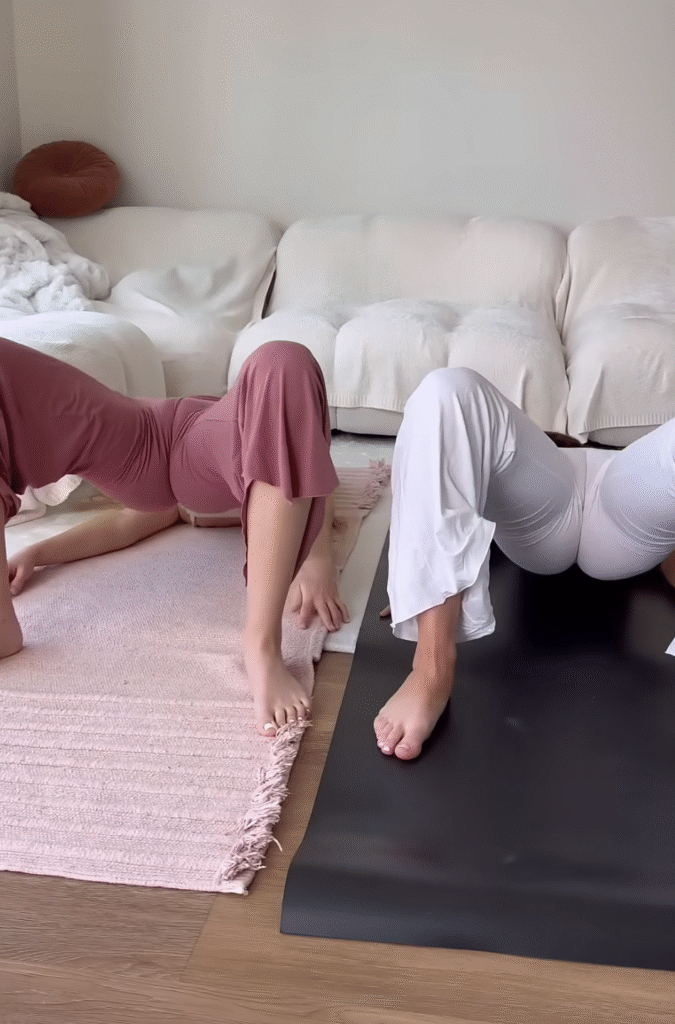
Gentle Lower Body Home Yoga Routine (20–30 Minutes)
Tip: Move slowly and breathe deeply through your nose. Hold each pose for 30 seconds to 1 minute, unless otherwise suggested.
1. Easy Seated Pose with Forward Fold (Sukhasana Forward Fold)
Targets: Hips, lower back
Sit cross-legged with your spine tall. Inhale to lengthen, then exhale and slowly fold forward, reaching your hands out in front of you. Let your forehead rest on the ground or a pillow if needed. Breathe deeply into your lower back and hips.
Modification: Sit on a cushion if your hips feel tight.
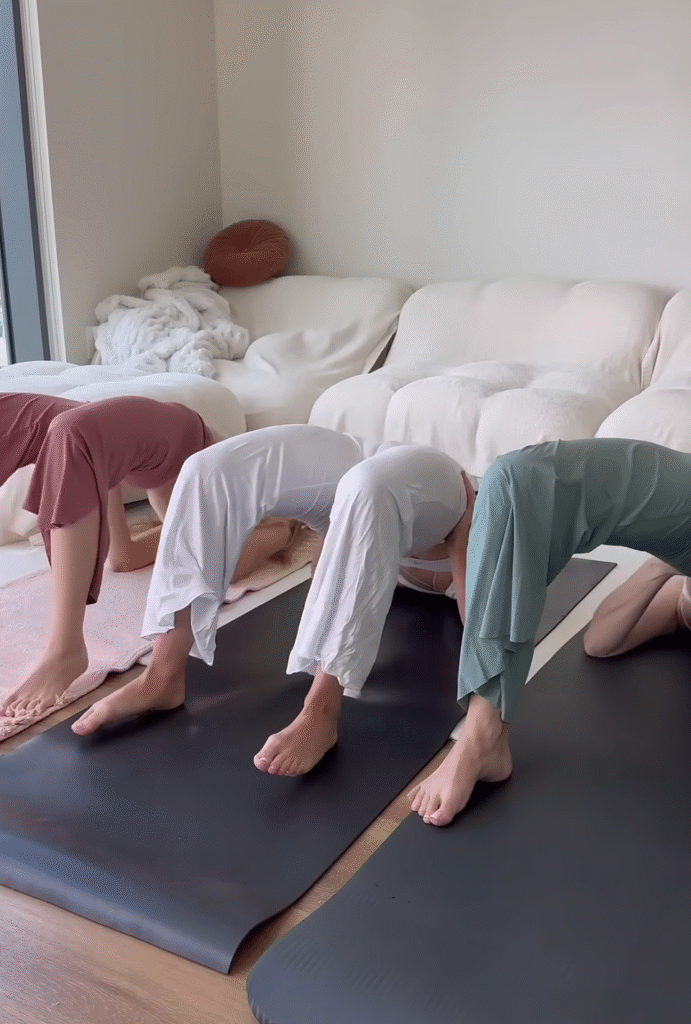
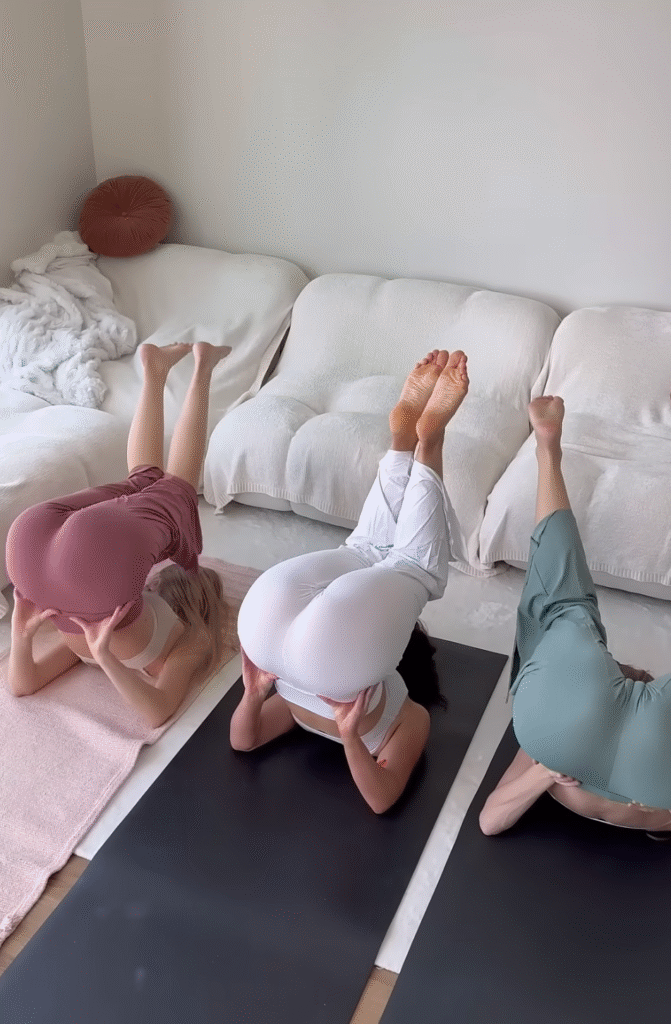
2. Cat-Cow Stretch (Marjaryasana-Bitilasana)
Targets: Spine, lower back, core
Come to all fours with your hands under your shoulders and knees under your hips. Inhale to arch your spine (cow), lifting your head and tailbone. Exhale to round your back (cat), tucking your chin and pelvis. Repeat for 5–8 breaths.
This dynamic movement gently warms up the spine and core.

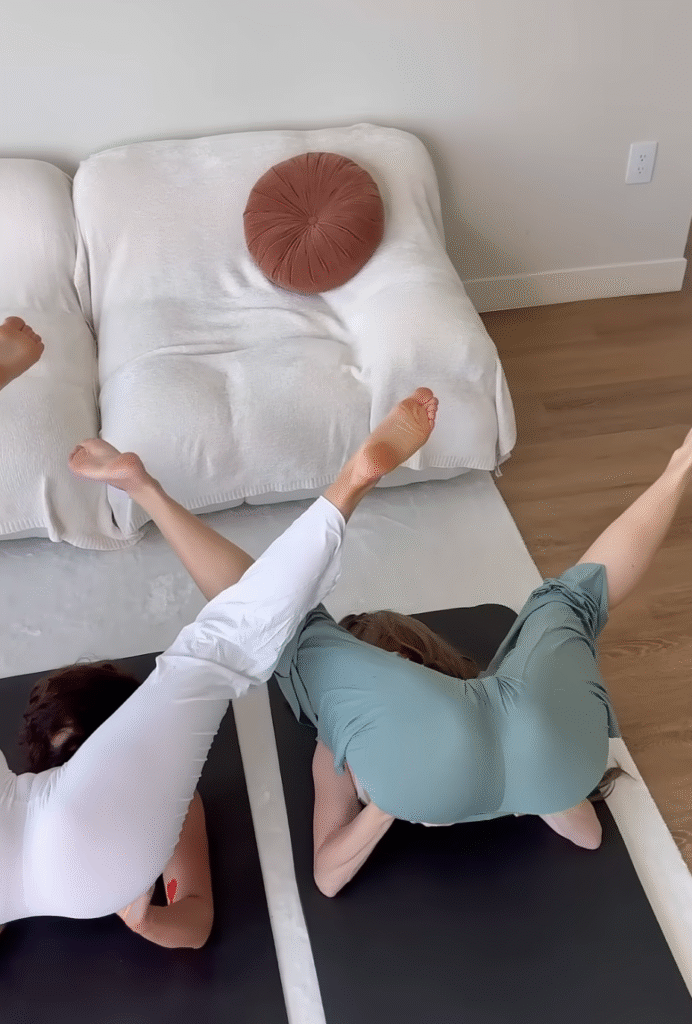
3. Low Lunge (Anjaneyasana)
Targets: Hip flexors, quads, groin
Step your right foot forward between your hands in a lunge position. Lower your left knee to the mat. Press your hips gently forward while keeping your spine upright. Raise your arms if it feels comfortable.
Hold for 5–8 breaths, then switch sides.
Tip: Place a blanket under your back knee for extra cushioning.
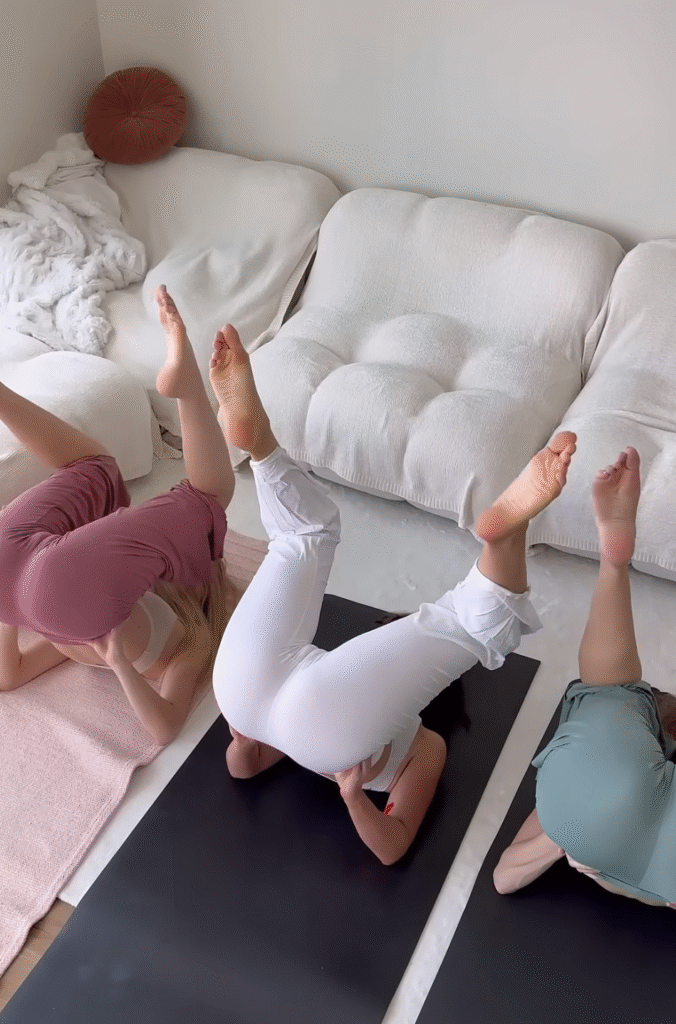
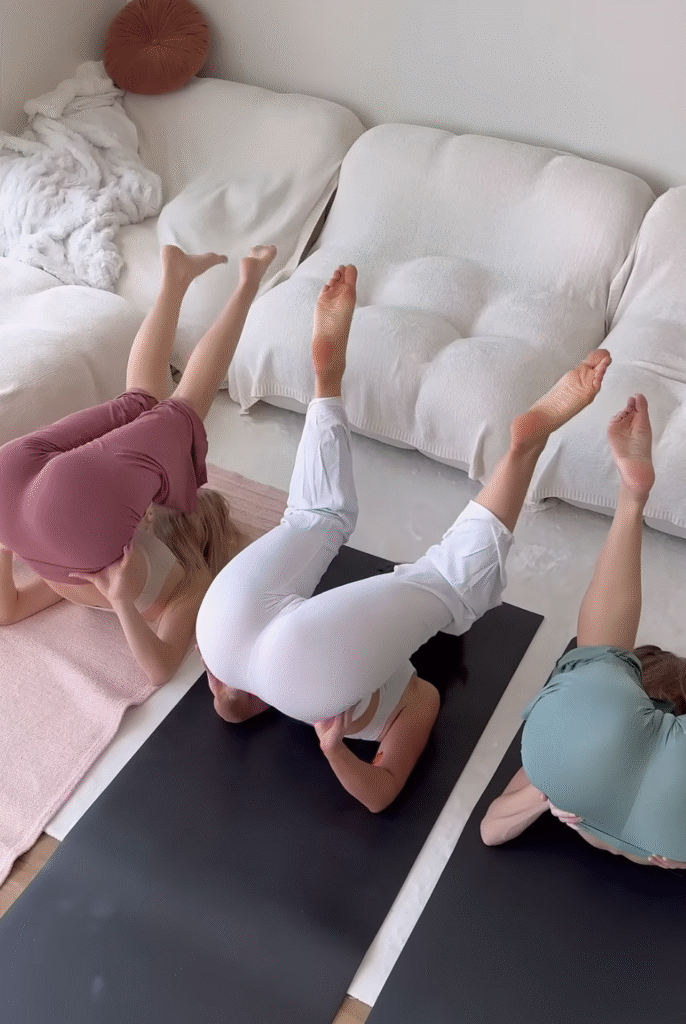
4. Half Split Pose (Ardha Hanumanasana)
Targets: Hamstrings, calves
From the low lunge, shift your hips back and straighten your front leg, flexing the foot. Keep your hands on the mat or blocks beside you. Lean forward gently over the extended leg without forcing the stretch.
Hold for 5–8 breaths on each side.
5. Reclined Pigeon Pose (Supta Kapotasana)
Targets: Hips, glutes
Lie on your back. Cross your right ankle over your left thigh, just above the knee. Thread your hands through and clasp behind your left thigh, drawing your legs toward your chest. Keep your shoulders relaxed and your back grounded.
Hold for 1–2 minutes on each side.
Note: This pose deeply opens the outer hips and glutes and is excellent for relieving sciatica-related tension.
6. Supine Twist (Supta Matsyendrasana)
Targets: Spine, hips, lower back
Lie on your back and hug your right knee into your chest. Cross it over your body to the left, allowing your torso to twist. Extend your right arm to the side and gaze over your shoulder.
Hold for 1–2 minutes per side. Let your breath guide the twist deeper.
7. Butterfly Pose (Baddha Konasana)
Targets: Inner thighs, groin, hips
Sit tall and bring the soles of your feet together. Let your knees fall out to the sides like butterfly wings. Hold your feet with your hands and gently fold forward if comfortable.
Stay here for up to 2 minutes, breathing into the stretch.
Tip: Use cushions under your knees if they don’t reach the floor.
8. Legs-Up-the-Wall (Viparita Karani)
Targets: Legs, lower back, lymphatic system
Lie on your back with your legs extended up a wall. Scoot your hips as close to the wall as is comfortable. Let your arms rest by your sides. Close your eyes and breathe slowly.
Stay here for 5–10 minutes. This restorative pose improves circulation, reduces swelling, and relieves leg fatigue.
Breath and Mindfulness: The Final Touch
In every pose, prioritize your breath. Let it be slow, steady, and deep—ideally inhaling for 4 counts and exhaling for 4 counts. This keeps your nervous system calm and supports a deeper release in your muscles.
After completing the routine, lie in Savasana (corpse pose) for a few minutes with your arms by your sides and your eyes closed. Let your body absorb the benefits of your practice.
How Often Should You Practice?
You can do this routine 2–3 times a week or daily if you have the time. It’s gentle enough to repeat often, especially if you have a sedentary job, lower back discomfort, or tight hips.
Modifications and Props
Yoga should feel good, not painful. If any pose feels uncomfortable, adjust it or skip it entirely. Use cushions, yoga blocks, or even thick books for support. A rolled towel can substitute for a bolster in restorative poses.
Conclusion
Taking just a few minutes out of your day to stretch, breathe, and reconnect with your body can create profound benefits over time. This gentle lower body home yoga routine is more than just physical movement—it’s a form of self-care and a chance to slow down.
As you continue to practice, you’ll likely notice improvements in flexibility, posture, and even mood. So, roll out your mat, tune into your body, and give your lower half the attention and love it deserves.
Namaste.
Let me know if you want this adapted into a downloadable PDF, visual routine, or a voice-guided script!

